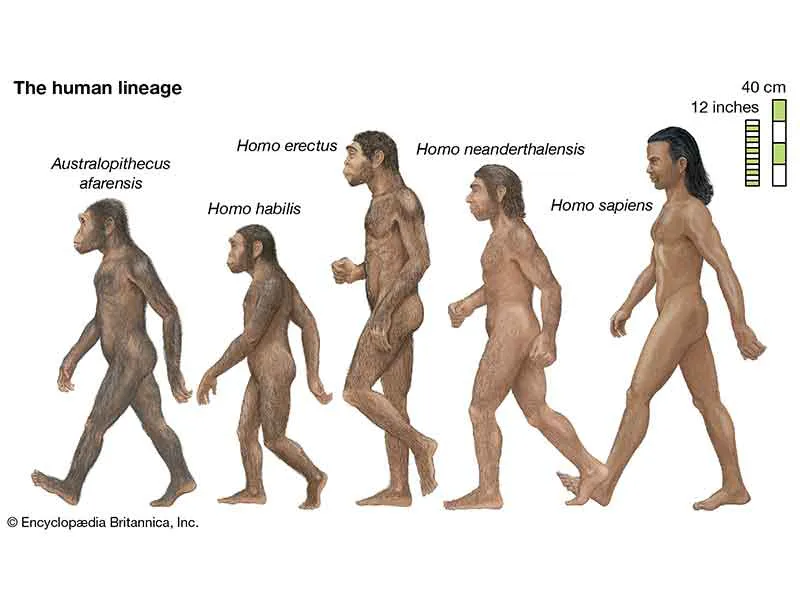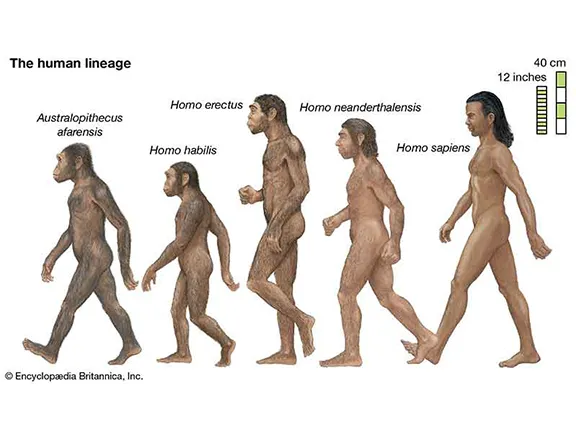New thoughts on the evolution of Homo sapiens from Homo erectus in prehistoric Andalucia. Are we related to the Neanderthals?
By Nick Nutter | Updated 26 Aug 2022 | Andalucia | History |
Login to add to YOUR Favourites or Read Later


Recent research into human DNA has shown that practice of dividing humans into species, that existed between two dates, is a flawed system. During a conversation with Professor John D. Hawk, associate professor of anthropology at the University of Wisconsin-Madison, at a conference in Gibraltar in 2010, we decided that DNA research was going to revolutionise the way archaeologists report finds. At the moment an archaeologist has to allocate a find, for example, a bone, to a particular species and, if it does not fit into an existing species, create a new species, before he or she can write a paper about the find. John came up with a finger in the wind estimate of 1 million years as a period of time over which a higher primate would speciate; become another species. In effect that would mean that during the entire period of Neanderthal existence, they would have been in effect Homo sapiens. Pushing those boundaries, Homo heidelbergensis, from the moment he left Africa, would have been Homo sapiens. Recent research has shown John to be uncannily accurate with his finger in the wind estimate.
Genomic studies from 2016 to 2019 reveal how convoluted the emergence of modern humans was. We carry genes from our ancestors’ encounters with ancient people like the Neanderthals, but the Neanderthals already carried some modern human genes from even earlier encounters with vanished groups. Relationships were obviously a two way street. Neanderthal genes ended up in modern humans and modern human genes ended up in Neanderthals, contributing up to 6% of the Neanderthal genome.
The studies go beyond that and predict that all humans moving around the inhabited world indulged in gene mixing. Denisovans mated with Neanderthals as well as an earlier hominin, possibly Homo erectus. Humans in Africa interbred with other ancient hominin groups before, during and after the ancestors of Asian and European populations migrated away. Scientists estimate that those unknown groups make up between 4% and 8% of modern human ancestry. In fact, it is becoming increasingly likely that there were more migrations ‘out of Africa’ than is currently thought.
‘It suggests that maybe Neanderthals actually are us. As different as they are, maybe they’re just another version of us.’ John Hawks.
Which all goes to throw into doubt how we think of evolution, not just humans, but all living creatures. Evolution does not progress in leaps and bounds with long hiatus between. It is a continuous process. We are all a product of the genes of countless ancestors going back millions of years and my ancestors, far back in time, were not necessarily yours. So, even though every human on the planet can trace back to a common ancestor, that common ancestor is likely to have lived millions of years ago, rather than tens of thousands. Every human is the apex of a pyramid and every human at each level of the pyramid is at the apex of his or her ancestral pyramid. Sometimes the pyramids were partially destroyed by traumatic events, war, famine, disease, inclement climate, geographical separation but it seems as though some of the survivors of each pyramid managed to make contact with other survivors and carry on.
In another 500,000 years, the humans that exist then, if the species survive that long, will be a separate species to the Neanderthals. However, they will still be the same species as us today, who in turn are the same species as Neanderthals.
Imagine a sliding ruler with a slide 1 million years long, the ruler is 6 million years long. Marked on the ruler are the many ‘species’ of humans, and the dates between which they lived. Any human ‘species’ beneath the slide as it moves up and down the ruler will be, in effect, the same human ‘species’ as any other human ‘species’ beneath the slide and capable of procreation if they happen to meet.
I asked John Hawk if the slide rule analogy was accurate and he replied:
'...to answer your question, we don’t know whether the “slide rule” effect would work for all of human evolution. We do know that modern humans and Neandertals could reproduce after some 600,000 years or more of partial isolation. That may have also been true for much earlier hominins, but we cannot test this.
The span of 7 million years is a very long time, and hominins underwent some very significant changes in anatomy across that time. We do know that humans and chimpanzees are not reproductively compatible after some 7 million years of separation, but our ancestors on the hominin line are only half that distance from us. It is a fascinating unknown.
So, the slide rule analogy as amended;
Imagine a sliding ruler with a slide 1 million years long, the slide represents the length of time it takes primates to evolve into a separate species. The ruler is 6 million years long representing the length of time hominids have been around. Marked on the ruler are the many ‘species’ of humans, and the dates between which they lived. For any human ‘species’ beneath the slide as it moves up and down the ruler, there is a possibility that they were the same species.
Aaron P. Ragsdale ,Simon Gravel . Models of archaic admixture and recent history from two-locus statistics (2019) https://doi.org/10.1371/journal.pgen.1008204
Alan R. Rogers, Nathan S. Harris, Alan A. Achenbach. Neanderthal-Denisovan ancestors interbred with a distantly-related hominin (2019)
bioRxiv 657247; doi: https://doi.org/10.1101/657247
Eleanor M.L., Scerri Mark G., Thomas Andrea Manica et al. Did Our Species Evolve in Subdivided Populations across Africa, and Why Does It Matter? (2018) DOI:https://doi.org/10.1016/j.tree.2018.05.005
Harvati, K., Röding, C., Bosman, A.M. et al. Apidima Cave fossils provide earliest evidence of Homo sapiens in Eurasia. Nature 571, 500–504 (2019). https://doi.org/10.1038/s41586-019-1376-z
Hawk, J. Personal communication (2020)
Kuhlwilm, M., Gronau, I., Hubisz, M. et al. Ancient gene flow from early modern humans into Eastern Neanderthals. Nature 530, 429–433 (2016). https://doi.org/10.1038/nature16544
Melissa J. Hubisz, Amy L. Williams, Adam Siepel Mapping gene flow between ancient hominins through demography-aware inference of the ancestral recombination graph (2019) bioRxiv 687368; doi: https://doi.org/10.1101/687368